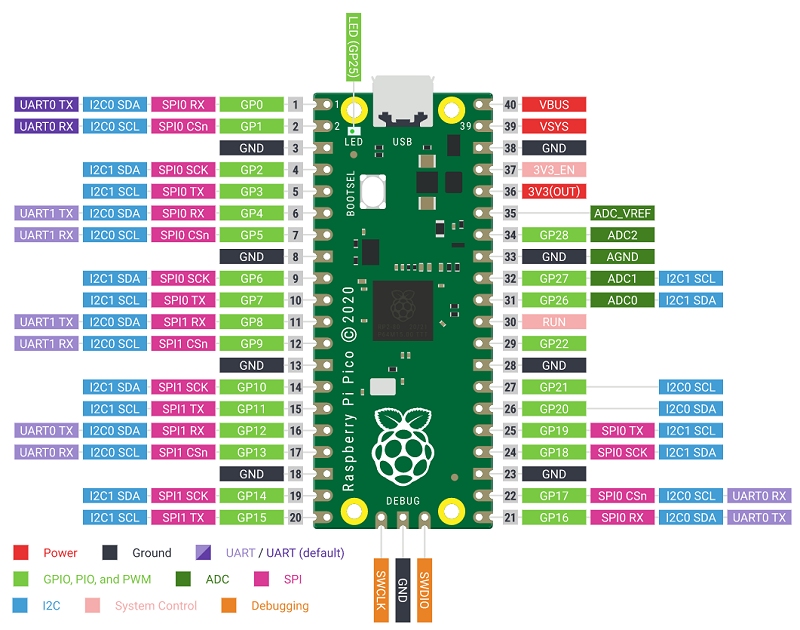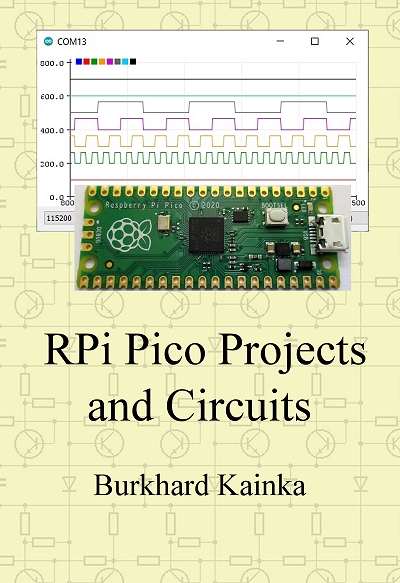
RPi
Pico Projects and Circuits
Elektronik-Labor
Projekte
Mikrocontroller
Raspberry
Foreword
This book enables the efficient use of the RPi Pico in numerous
practical applications. The circuits presented bring out the special
features of the Pico. Often, surprisingly few external components are
needed for a task if the internal peripherals of the RP2040 are used
optimally. The aim of the book is to show the simplest and most
cost-effective solution for many applications. Minimalist circuits
become useful projects with the right software.
Compared to a common 8-bit controller, the RPi Pico offers more ports,
more speed, special peripherals and an extra core that can be used to
perform time-critical tasks completely uninterrupted. The book uses the
Arduino programming environment because it is widely available and easy
to use. You are not limited to the usual Arduino functions, but can use
all the functions from the Raspberry Pi Pico C/C++ Software Development
Kit.
Stay creative!
Burkhard Kainka
Contents
1 Preparations 1
2 LED control 12
3 Fast port outputs 16
4 PWM control 18
5 Digital inputs 22
6 Voltage measurement 27
7 Diode tester 29
8 Input thresholds and hysteresis 32
9 Temperature measurement 37
10 Adjustable voltage source 41
11 Characteristic curve recorder 45
12 Simple oscilloscope 52
13 Light measurement by LED 54
14 Class D amplifier 56
15 Frequency counter 1 Hz to 1 MHz 60
16 Frequency counter 1 kHz to 65 MHz 64
17 Frequency counter 1 Hz to 100 MHz 67
18 Signal generator 7 Hz to 50 MHz 70
19 Frequency divider 74
20 RC oscillators 76
21 Capacitance measurement 82
22 Touch sensor 85
23 Fast oscilloscope 91
24 Two-channel oscilloscope 94
25 Seven-segment display 99
26 Digital voltmeter 103
27 DDS sinus generator 106
28 Sweep generator 111
29 Two-tone generator 116
30 Two-channel DDS and scope 121
31 PIO frequency divider 128
32 Logic analyser 133

Elektronik-Labor
Projekte
Mikrocontroller
Raspberry




